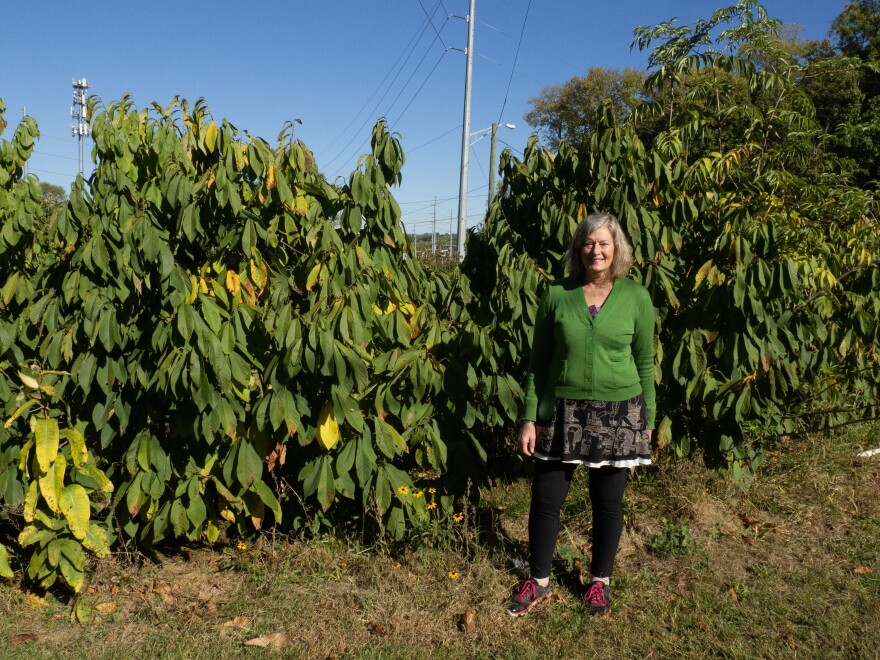I arrange to meet curator Sue Spaid at a traffic island where Erie and Red Bank intersect. You can’t get to it unless you dare to cross three lanes of heavy traffic or if a city bus drops you at the little shelter where the sidewalk ends. A decade ago, Sue Spaid was working on a show called Green Acres and sought project space for art that solves ecological problems. She thought this space had problems.
She said, “It looked like a mess, it looked like a dumpyard. And somehow a person who could greenlight the project drove by it every day. So she said I have the perfect spot if you would like to do something interesting with artists. Please come and bring them here and see what they can do.”
So, she brought California ECO-artists Susanne Cockrell and Ted Purves, who go by the name Fieldfaring. They created an edible garden called Pawpaw Circle. They planted Ohio native plants, including a grove of 19 pawpaw trees that are now bearing fruit
“If you look at it you can see that it’s a nice little garden with buckeyes and paw paws and persimmons and goldenrod and lots of little flowers, it looks really charming, it’s an artwork, it was designed for foraging purposes. And even if people don’t come and forage, it’s reminding people that this is our heritage, this is a possibility, we once lived from our forests. Let’s bring that back as much as we can. It’s a living sculpture on this level.”

As a young curator, Spaid noticed that artists were working with materials like soil and water and even designing entire gardens to reclaim neglected land and encourage biodiversity. She and colleague Amy Lipton coined the term “ecovention” to identify art that fused ecology and invention. They put together a groundbreaking exhibition at the Contemporary Arts Center in Cincinnati in 2002.
“With our first show, it was very well received, it was super popular, we got incredible reviews, we won lots of awards, but we still had this overarching worry hanging over our head by members of the public, by members of the museum world, by members of the critical world, ‘Why is this art and not science?’”
So, she reworked the term “ecovention” to highlight the artist’s intent for an ecological outcome. And it’s the ecological outcome that makes it different from the vast array of art that’s about nature.
“A lot of things may not look ecological and they are, and a lot of things look beautiful to human beings and they’re really not ecological. All of these have been huge learning curves for me, to try to understand which approaches are ecological, which approaches are more copacetic with the earth. But in fact, I would make the claim that every single project that deals with ecology could fall under the umbrella of effecting, or improving, or mitigating climate change.”
But that doesn’t mean we have to give up beautiful art to save the planet.
“One term I’ve adopted recently is biodiverse beauty, because I think that we humans spend too much time looking at things from the pleasure of our eyes, and maybe if we were able to say, ok our goal is biodiversity, how many species does this land support, maybe it would change our very ideas about beauty.”
Back at Pawpaw Circle, people can find beauty in what they might have thought was an abandoned space. If you visit, take a look at what’s growing and then pick yourself a pawpaw. You can touch the art and it too.



